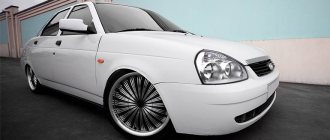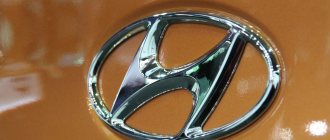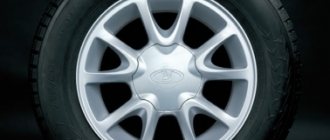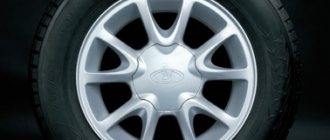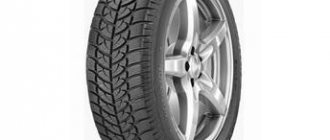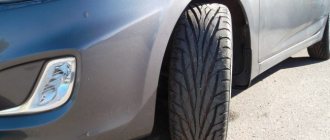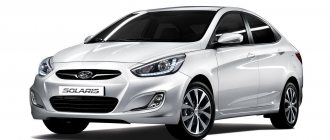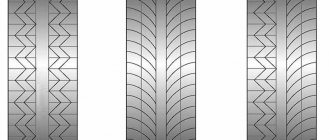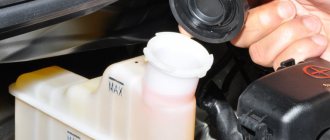The Russians saw the first Solaris, assembled in St. Petersburg by Hyundai Motor, a subsidiary of Hyundai Motor Company, in 2011. And I must say, it became a good competitor for the then popular Renault Logan and VW Polo.
The Hyundai Getz was no less in demand, but it was discontinued so as not to create competition between models of the same brand.
As soon as the new car went on sale, wheels for the Hyundai Solaris (meaning the size) immediately became scarce due to the sharp rise in demand. What was the reason for this, and what range of tires and wheels are offered for this car today? You will learn about this and much more from this article.
Standard disk sizes
Factory wheel sizes for Hyundai Solaris:
- Diameter
The rim diameter is the seat size of the wheel in inches. By the way, the abbreviation R15 is not the 15th radius of the disk. 15 is its diameter in inches, and the letter R is generally a tire characteristic for this rim. It indicates the radial arrangement of the cord threads in the frame.
The diameter of the wheels for Solaris is 14, 15, 16 and 17 inches. 14-inch wheels were installed at the factory on all first-generation models.
Starting with the restyled models of 2014-2017, there are three sizes of wheels - 15.16 and 17 inches. Accordingly, the tire size for a 15-inch wheel is 185/65 R15, and for a 16-inch wheel it is 195/55 R16. 17-inch wheels should have 205/45 R17 tires.
The Hyundai Solaris II already uses two types of wheels - 15 and 16 inches. The factory equipment of 2022 cars includes stamped 6Jx15 ET46 wheels.
- Rim width
The width of the rim is designated as 5.5 J, where the number is the value in inches. The letter J near the diameter is a characteristic of the shape of the edges of the disk, which is incomprehensible to the average consumer and not particularly necessary.
The width of the wheels on Solaris is 5.5, 6 and 6.5 inches. All three sizes were used in the first generation models of 2011-2014. The restyled Solaris 2014-2017 come with 6- and 6.5-inch wide wheels. Solaris II cars produced from 2022 to the present are equipped with 6-inch wheels.
- Departure
The abbreviation for departure is ET. Disc offset for Solaris vehicles is positive. Offset values for discs of different sizes are 43, 46.48, 49 and 52 mm.
The ET43 value was average exclusively for R14 wheels - the offset range varied from 35 to 45 mm. Moreover, for R16 and R17 the same offset value was strict, not a millimeter more or less.
An offset of 46 and 48 mm is typical for cars with R15 wheels, and 49 and 52 mm are the characteristics of R16 diameter wheels.
The first restyled models from 2014-2017 had wheels with offsets of 48 and 52 mm. On modern disks, which have been equipped with Solaris since 2022, the offset is 46 and 49.
- Sverlovka
Drilling (other terms - bolting, reaming) for Solaris disks is 4x100. This means that the disk has 4 holes for mounting bolts, and the diameter of the circle that can be drawn through them will be 100 mm. The number of holes is LZ and the diameter is PCD.
- CO diameter
The diameter of the central hole for the hub or DIA is 54.1 mm. This parameter has not changed since 2011.
Tire sizes and manufacturer's recommended tire pressure for Hyundai Solaris
The choice of tires is a real problem for most Hyundai Solaris owners due to the fact that the “range of sizes” is limited. Driving for a long time on tires with inappropriate sizes leads to decreased vehicle control and emergency situations.
| Wheel disks | Tires |
| 15ET45 | 205/60R15 |
| 15ET44 | 195/70R15 |
| 16ET45 | 205/65R16 |
The transcript reads as follows:
- wheel rim width;
- surface diameter;
- reach length;
- tire width;
- height in percent;
- diameter of the metal rim.
Parameters of standard nuts
Wheels for Hyundai Solaris cars produced between 2011 and 2022 were fastened with standard M12x1.5 nuts. The thread diameter of the nuts is 12 mm, and the thread pitch is 1.5 mm. Tightening torque – 88-107 Nm. Material – steel coated with chrome and zinc.
The original stamped wheels have open-type cone nuts 34 mm long. For non-original casting, it is recommended to install nuts 34-40 mm long, since cast wheels are thicker than stamped ones. For this reason, it is better not to place nuts from stamped wheels on alloy wheels - the engagement of the threaded connection will be insufficient for their reliable fastening.
How the pressure sensor works, how to turn it off
Starting from the second generation, Hyundai Solaris is equipped with electronic tire pressure sensors. The first generation has mechanical sensors. Due to insufficient efficiency and information content, the latter were replaced by modern ones.
The main task of the digital gadget is to monitor changes in air pressure in the tire and transmit data online to the electronic control unit. The latter compares the indicators with the programmed ones and informs the driver about a possible malfunction. Most often, this is a sound signal combined with light flickering.
More about Solaris
- What pressure should be in the tires of Hyundai cars?
- Tires for Hyundai Solaris: how to choose, sizes, pressure
- Which is better: Kia Rio or Hyundai Solaris, comparison of cars
- Comparison of Kia Rio and Hyundai Solaris
- Which is better RIO, Polo or Solaris
- Hyundai Solaris - why is it so good?
- Nissan Almera or Hyundai Solaris - which is better: comparison of cars
- Solaris low beam lamp: what bulbs are in Hyundai headlights, which bulbs are better and how to replace them
- Volkswagen Polo or Hyundai Solaris
- Price and equipment Hyundai Solaris
Maximum and minimum possible parameters of non-standard disks
The rim width, offset and drilling for a non-standard disk must correspond to the factory values.
If the PCD value differs by millimeters, the wheel will not sit completely on the hub - one nut will be tightened well, and the rest will be either overtightened or undertightened. This is fraught with “beating” of the disk, and loosely tightened nuts can be unscrewed while moving. A reduced offset value will lead to overload of the suspension and hub bearings, and an increased value will result in the disc touching the elements of the vehicle’s braking system.
As for the hub diameter, it must be observed for stamped discs. You can install alloy wheels with a large DIA value on your car by using a special spacer ring made of metal or plastic.
But the diameter of the disk may be larger. Only as the wheel size increases should the tire profile decrease. Yes, with larger diameter wheels the speed will increase, the handling in corners will be better, and the ground clearance will be greater. But at the same time, the car will accelerate and brake more slowly, and there will be less driving comfort, since a thinner tire will absorb shock loads worse than that recommended by the manufacturer.
Optimal tire pressure Hyundai Solaris
Do you know which indicator is one of the main ones that determines the behavior of your car while driving on the road? This indicator plays a significant role in the effectiveness of adhesion to the road surface, which, in turn, directly affects the level of safety of movement. Ensuring the proper level of this indicator recommended by the car manufacturer is one of the most reliable options to avoid problems along the way.
We are, of course, talking about tire pressure levels. And today we will get acquainted with information about this important indicator from the words of specialists.
More on the topic: Which is better: Kia Rio or Hyundai Solaris, comparison of characteristics and appearance of the car
It is necessary to monitor the pressure of car tires twice a month.
This will significantly reduce carbon dioxide emissions, reduce fuel consumption and extend the life of the tires themselves. Don’t forget about comfort, which is not very pleasant when driving on overinflated tires.
In the table below, we suggest you familiarize yourself with the recommended tire pressure for Hyundai cars.
| Tire pressure table for Hyundai car | ||||||
| Model | Mode Standard | Comfort mode | Sport mode | |||
| front | rear | front | rear | front | rear | |
| Solaris | 2,2 | 2,2 | 2,0 | 2,0 | 2,8 | 2,8 |
| i30 | 2,1 | 2,1 | 1,9 | 2,0 | 2,7 | 2,7 |
| i40 | 2,4 | 2,4 | 2,2 | 2,2 | 2,8 | 2,8 |
| ix35 | 2,3 | 2,3 | 2,0 | 2,0 | 2,8 | 2,8 |
| Sonata | 2,2 | 2,2 | 2,1 | 2,1 | 2,8 | 2,8 |
| Santa Fe | 2,1 | 2,1 | 2,0 | 2,0 | 3,0 | 3,0 |
Pressure in Solaris
The pressure in Hyundai Solaris cars is indicated on the door arch. It is recommended to pump Solaris tires at 2.2 bar, regardless of the tire size. Naturally, this is the pressure in cold tires, i.e. in a car that had been at rest for 30 minutes.
If you measure the pressure in hot tires, it will be higher than recommended for Solaris. For economical mode, it is recommended to pump the tires to 2.8 bar; this will allow, albeit slightly, to save on fuel. Although, perhaps, to the detriment of saving on tires.
What should the pressure be in Santa Fe?
Santa Fe belongs to the class of small SUVs, so its tire pressure can vary significantly depending on operating conditions and the tires installed.
The suspension on the Santa Fe is soft, so you need to keep the tires with low pressure only when necessary, for example, when we are driving on a muddy forest road or you need to reduce the pressure to lower the car's height by 2-5 cm.
Top 4. Gislaved Nord Frost 200
Rating (2021): 4.28
577 reviews from resources were taken into account: Mosavtoshina, Yandex.Market, Otzovik, Irecommend
Optimal balance of price and quality Average-priced tires demonstrate far from average ability to overcome snowy and slippery winter roads. They hold their course well and remain soft in severe frosts.
- Characteristics
Average price: 4832 rub.
- Country: Germany
- Load, kg: 615-630
- Speed, km/h: 190
- Tread pattern: asymmetrical
The tires have gained popularity due to their high handling, wear resistance, and reasonable price. The tread design here works for reliable traction and driver safety. Compared to previous models of the brand, there are more tread blocks with cutting edges due to the reduced size of the blocks themselves. This significantly increased tire grip on winter roads. Drivers in the reviews note that Solaris on these tires does not skid when cornering, it brakes confidently and maintains directional stability. In addition, for winter tires these tires can be called quiet. But they have weak sidewalls and after 2-3 seasons the spikes begin to actively disappear.
Advantages and disadvantages
- Clutch
- Controllability
- Quiet
- Spikes fly out quickly
Top 5. Cordiant Snow Cross
Rating (2021): 4.20
858 reviews from resources were taken into account: Mosavtoshina, Yandex.Market, Irecommend, Otzovik
The most popular High quality and reasonable price make these winter tires the most popular among car owners.
- Characteristics
Average price: 4853 rub.
- Country Russia
- Load, kg: 615-630
- Speed, km/h: 190
- Tread pattern: symmetrical
The tread of these tires is created using the unique SNOW-COR technology, which is responsible for the confident passage of the car on ice, snow and water. The tire design is two-layer. The base hard layer promotes proper pressure distribution inside the tire and ensures even wear. The outer layer of rubber is softer - together with the tread pattern, it provides reliable grip on the road surface. In reviews, drivers note the wear resistance of the tires and their stability on snowy and icy roads. Although at above-zero temperatures with heavy snow porridge they can let you down. Many also complain about noise, especially when breaking in the tires.
Advantages and disadvantages
- Controllability
- Good drainage of snow and water
- Wear resistance
- Noisy
Wheel bearing diagnostics
A faulty bearing makes itself known by a low-frequency hum. It first appears at high speed and disappears completely as it decreases. Over time, the sound progresses, appearing and descending at a lower speed.
A situation is possible when there is no hum, but there is a slight backlash. It is always there with a lot of play. The bearing can hum without increased play. This is necessary to know when diagnosing.
How to check the bearing and find out which side is the problem?
- Verification methods:
- Check in motion
- Checking on a hanging wheel
- Checking for play
1) Check in motion. A very effective and affordable way. You need to pay attention to what happens when turning. Let's say the problem is on the right side - that means that when turning right, the weight of the car will transfer to the left side and the sound will disappear or become quieter, because the load on the worn bearing will change.
When turning left, the sound increases or remains unchanged. A long turn where it is possible to maintain a higher speed is ideal for testing.
2) Check on a hanging wheel. Now tighten the handbrake. We hang one side and leave the other on the floor. The car won't go anywhere. The differential is free, only the suspended wheel will spin.
It is advisable to place something under the lever, as close to the wheel as possible. Then we lower the car from the jack. It is necessary for the drive to assume its operating position, such as during normal movement.
First, you can try to spin the wheel by hand, having first set the box in neutral. It is inconvenient to do this on a front-wheel drive car, but severe wear will still make itself known through noise. If this is not clear, move on to the next one:
We start the car and engage the gear (for manual transmission) or set the selector to position D. The wheel rotates, you can listen to the bearing. The working one works without noise, whispers. The problem one is noisy.
If you have no experience, you may have to hang and listen to both sides for comparison.
3) Check for play. This verification method must be described because it is the most common and allows you to diagnose an already running bearing. It is difficult for them to detect the early stages of wear.
The check is carried out on hanging wheels. We check by lightly shaking in the vertical and horizontal planes. There should be no backlash. If present, you need to be able to eliminate the tie rod end and tie rod. They give similar play when worn. Therefore, this method requires some qualifications.
A sign of critical wear is the appearance of vibration on the steering wheel. On a flat road you can feel the car being pulled to one side. The side of the faulty bearing.
If you take too long to replace it, it may jam while driving.
Video: All the nuances when replacing a bearing
The section contains all the pitfalls that may arise when performing work.
How to remove the ball and steering joint without special pullers.
Your browser does not support the format
How to remove a stuck brake disc from the hub.
Your browser does not support the format
How to remove the hub from the bearing. There is an easier way, it is described in the section Replacing the front wheel bearing.
Your browser does not support the format
How to remove the old bearing race from the hub.
Your browser does not support the format

